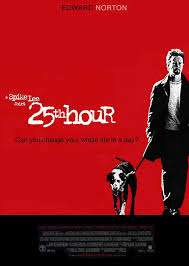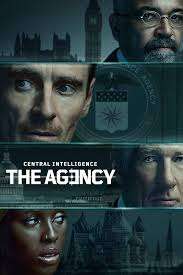Introduction
Frank Darabont’s The Green Mile (1999) is a cinematic masterpiece that transcends genre boundaries, blending elements of drama, fantasy, and prison film into a profoundly moving narrative. Based on Stephen King’s 1996 serial novel of the same name, the film explores themes of justice, compassion, and the supernatural through the lens of death row inmates and their guards in a 1930s Louisiana penitentiary.
Starring Tom Hanks as the compassionate prison guard Paul Edgecomb and Michael Clarke Duncan in a breakout role as the enigmatic John Coffey, The Green Mile is a film that lingers in the mind long after viewing. With its rich character development, emotional depth, and thought-provoking moral dilemmas, it stands as one of the most powerful adaptations of King’s work—arguably even surpassing The Shawshank Redemption (1994) in its emotional impact.
This review will examine the film’s narrative structure, performances, thematic depth, and technical execution, ultimately assessing its place in cinema history.
Plot Summary (Spoiler-Free)
Set in 1935 at Cold Mountain Penitentiary’s death row (nicknamed “The Green Mile” for its lime-colored floor), the story is told in flashback by an elderly Paul Edgecomb (Dabbs Greer). As a younger man (Tom Hanks), Paul supervises a group of guards, including the kindhearted Brutus “Brutal” Howell (David Morse), the cynical Percy Wetmore (Doug Hutchison), and the loyal Dean Stanton (Barry Pepper). Their routine is disrupted by the arrival of John Coffey (Michael Clarke Duncan), a towering, soft-spoken Black man convicted of raping and murdering two young white girls.
Despite his imposing size, Coffey exhibits childlike innocence and inexplicable healing abilities, causing Paul to question his guilt. Meanwhile, the guards must contend with Percy’s sadistic tendencies, the execution of other inmates (including the sympathetic Eduard “Del” Delacroix, played by Michael Jeter), and the moral weight of their jobs. As Paul uncovers the truth about Coffey, he is forced to confront profound questions about justice, faith, and the nature of evil.
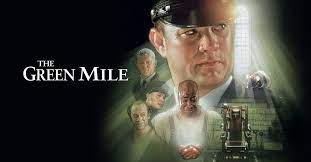
Narrative Structure & Pacing
The Green Mile employs a framing device, with the elderly Paul recounting his story from a nursing home. This structure adds a layer of melancholy, as the audience knows from the beginning that Paul has been deeply affected by these events. The film’s pacing is deliberate, allowing time for character development and quiet moments of reflection. At over three hours long, it could risk dragging, but Darabont’s direction ensures that each scene serves a purpose, building toward an emotionally devastating climax.
The film balances multiple subplots—Percy’s cruelty, Del’s tragic execution, Coffey’s miracles—without losing focus on its central themes. Some critics argue that the runtime could have been trimmed, but the slow burn enhances the film’s emotional payoff.
Characters & Performances
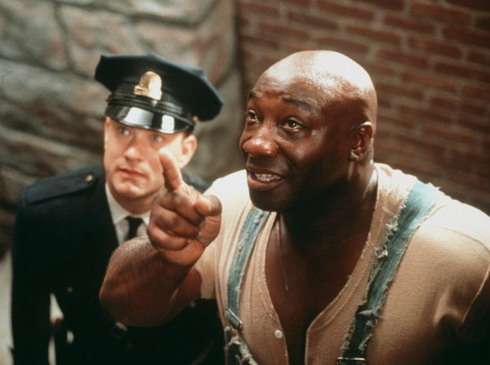
The film’s strength lies in its deeply human characters, brought to life by an exceptional cast.
1. Paul Edgecomb (Tom Hanks)
Hanks delivers one of his most understated yet powerful performances as a man burdened by his role in executions. His moral conflict anchors the film, and his chemistry with Duncan’s Coffey is heartrending.
2. John Coffey (Michael Clarke Duncan)
Duncan’s performance is nothing short of miraculous. Despite his intimidating physique, Coffey radiates gentleness and sorrow. His line, “I’m tired, boss. Mostly, I’m tired of people being ugly to each other,” encapsulates the film’s central tragedy. Duncan deservedly earned an Oscar nomination for this role.
3. Percy Wetmore (Doug Hutchison)
One of cinema’s most loathsome villains, Percy embodies petty cruelty. Hutchison plays him with just the right amount of smirking malice, making his eventual comeuppance deeply satisfying.
4. Supporting Cast
- David Morse as Brutal Howell provides moral stability.
- Michael Jeter as Del Delacroix brings humor and pathos.
- Sam Rockwell as the unhinged “Wild Bill” Wharton is terrifying.
- James Cromwell as the warden adds gravitas.
Each actor contributes to the film’s emotional tapestry, making even minor characters memorable.
Themes & Social Commentary
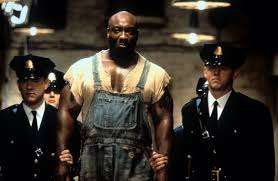
The Green Mile is more than a prison drama—it’s a meditation on:
1. The Death Penalty & Moral Ambiguity
The film doesn’t preach but forces viewers to question capital punishment. Coffey’s innocence highlights the system’s flaws, while other inmates’ fates complicate the debate.
2. Racism & Injustice
Coffey’s conviction is heavily implied to be racially motivated, reflecting the era’s prejudices. His Christ-like suffering underscores the tragedy of Black men wrongfully condemned.
3. Redemption & Sacrifice
Coffey’s abilities—healing Paul’s infection, resurrecting a mouse—symbolize purity in a corrupt world. His willingness to die, despite his innocence, evokes biblical sacrifice.
4. The Nature of Evil
Wild Bill and Percy represent human evil, while Coffey embodies goodness. The film suggests that true evil isn’t supernatural but mundane cruelty.
Cinematography & Direction
Frank Darabont, reuniting with Shawshank cinematographer David Tattersall, crafts a visually stunning film. The muted color palette reflects the prison’s grim reality, while warm lighting in flashbacks adds nostalgia. The execution scenes are harrowing, filmed with unflinching realism.
Darabont’s direction is patient, allowing silence and glances to convey emotion. The supernatural elements are understated, making Coffey’s miracles feel more poignant than fantastical.
Music & Sound Design
Thomas Newman’s score is hauntingly beautiful, blending melancholy strings with gospel influences. The recurring “Cheek to Cheek” motif underscores the film’s themes of fleeting joy and sorrow. Sound design is equally effective—the electric chair’s buzz is chilling, and the quiet moments are filled with tension.
Comparisons to Other Films
- The Shawshank Redemption (1994) – Both are Darabont-directed Stephen King adaptations about hope in prison, but The Green Mile is darker and more mystical.
- To Kill a Mockingbird (1962) – Like Atticus Finch, Paul confronts racial injustice, though The Green Mile adds supernatural elements.
- The Executioner’s Song (1982) – Both explore the psychological toll of executions, but The Green Mile leans into spiritual themes.
Criticisms & Flaws
- Length – At 189 minutes, some scenes feel prolonged.
- Sentimentality – A few moments border on melodrama (e.g., Mr. Jingles the mouse).
- Magical Negro Trope – Some argue Coffey fits this problematic archetype, though Duncan’s performance elevates him beyond stereotype.
Final Verdict
The Green Mile is a rare film that balances brutality and tenderness, leaving viewers emotionally shattered yet uplifted. Its exploration of justice, faith, and humanity’s capacity for both cruelty and grace ensures its place as a classic.
Rating: 9.5/10
- Strengths: Stellar performances, profound themes, emotional depth.
- Weaknesses: Pacing issues, occasional sentimentality.
Who Should Watch It?
Fans of character-driven dramas, Stephen King adaptations, and films that challenge moral convictions. Not for those seeking light entertainment.
Final Thought
The Green Mile is more than a movie—it’s an experience. Its final revelation (Paul’s unnaturally long life as a “punishment” for Coffey’s execution) lingers like a ghost, a reminder of the cost of injustice. Few films achieve this level of emotional resonance, making it a timeless masterpiece



